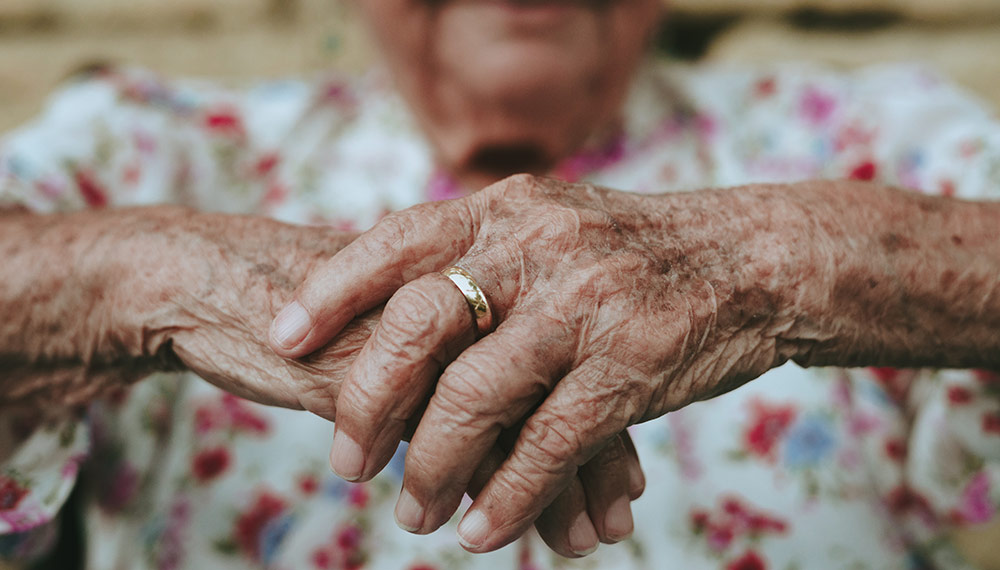Wound Care Tips for Caregivers
As a caregiver for the elderly, it’s essential to understand the basics of wound care. According to the Centers for Disease Control and Prevention (CDC), wound healing is a complex process that begins with damage and ends with restoring a healthy and intact skin barrier. This damage is caused when the skin is exposed to trauma such as a cut or scrape. As we age, the risk also increases for wounds caused by infection as our ability to protect ourselves from infection decreases. Caregivers can help by practicing good wound care techniques at home and monitoring the progress of wounds to ensure speedy healing.

An Ounce of Prevention…
The best way to help a loved one with wound care is to prevent injuries before they occur. Preventative measures include: minimizing falls in the home to reduce the risk of cuts and scrapes, as well as preventing the spread of infection among the elderly through proper hygiene techniques and frequent hand washing.
Preventing cuts requires diligence and care. The skin is the largest organ in the body but is also the most neglected. Every day, an older person’s skin is exposed to irritants, chemicals, and dangers. As people get older, their skin becomes drier, especially if they are dehydrated, which many seniors are. Dry skin makes the skin more susceptible to tears and abrasions, which can result in injuries to the skin’s surface.
Regularly applying moisturizer to their skin can help relieve dryness and reduce the chance of injury and infection. This is especially important in winter when the air is cold and dry. Increasing water intake and multivitamin intake can also improve the skin’s elasticity and help reduce the risk of injuries and infections.
Early Detection
Caregivers must pay close attention to their loved one’s skin and note any changes that occur, such as rashes or inflammation that may be caused by dry skin. Keeping the skin moisturized can help prevent cuts and scrapes that could lead to an infection. In addition to caring for the skin, caregivers should also keep an eye on their loved one’s fingernails and skin around their nails to check for any signs of infection.
Finally, make a schedule. This can be used for toileting, rotating the body, and, if possible, exercising. Changing positions and moving around helps to keep skin firm and less prone to severe problems.
Home Treatment
Suppose a family member complains of pus draining from a cut on the skin or a sore that seems to be worsening. In that case, seeking medical attention as soon as possible is essential to prevent further complications.
Another common wound in the elderly is a skin tear, or scraped area. The layers of our skin change as we age, and the epidermis thins. The skin becomes more vulnerable to tears, bruising, and infection with a less effective barrier to protect it. Most skin tears occur on the hands and arms and during daily activities such as dressing, bathing, transferring, and so on. The tricky part is dealing with these tears.
Because skin tears can be painful, caregivers should use a non-adherent dressing to keep the wound moist and clean while it heals. It can also help to reduce the number of dressing changes by using adhesives and tape.
Skin Tear First Aid
If a skin tear does occur, here are some first-line defense tactics that a caregiver can employ to dress the wound and prevent infection:
- Clean the area thoroughly with soap and water and pat it dry with a soft towel.
- Apply ionic silver powder to the wound. This antimicrobial will help keep infection at bay.
- Use a moisturizer containing Vitamin C or grapeseed extract. Apply this to the skin around the wound, not the injury itself, to strengthen the skin and make it less vulnerable to other skin tears.
- Place a hydrogel sheet — a cushioned bandage with no adhesives — over the wound.
While monitoring their ones, caregivers must watch for various skin abrasions and wounds. Prevention and awareness are a caregiver’s first line of defense, regardless of the type of wound. Some preventive measures can help reduce the occurrence of injuries while also giving a caregiver confidence in knowing how to handle a situation if one arises. However, not all wounds can be prevented. Therefore, detection and treatment are critical to the healing process.
Are you considering caring for a friend or family at home? Find out how Mass Care Link can help, including if you’re eligible for a monthly payment.
